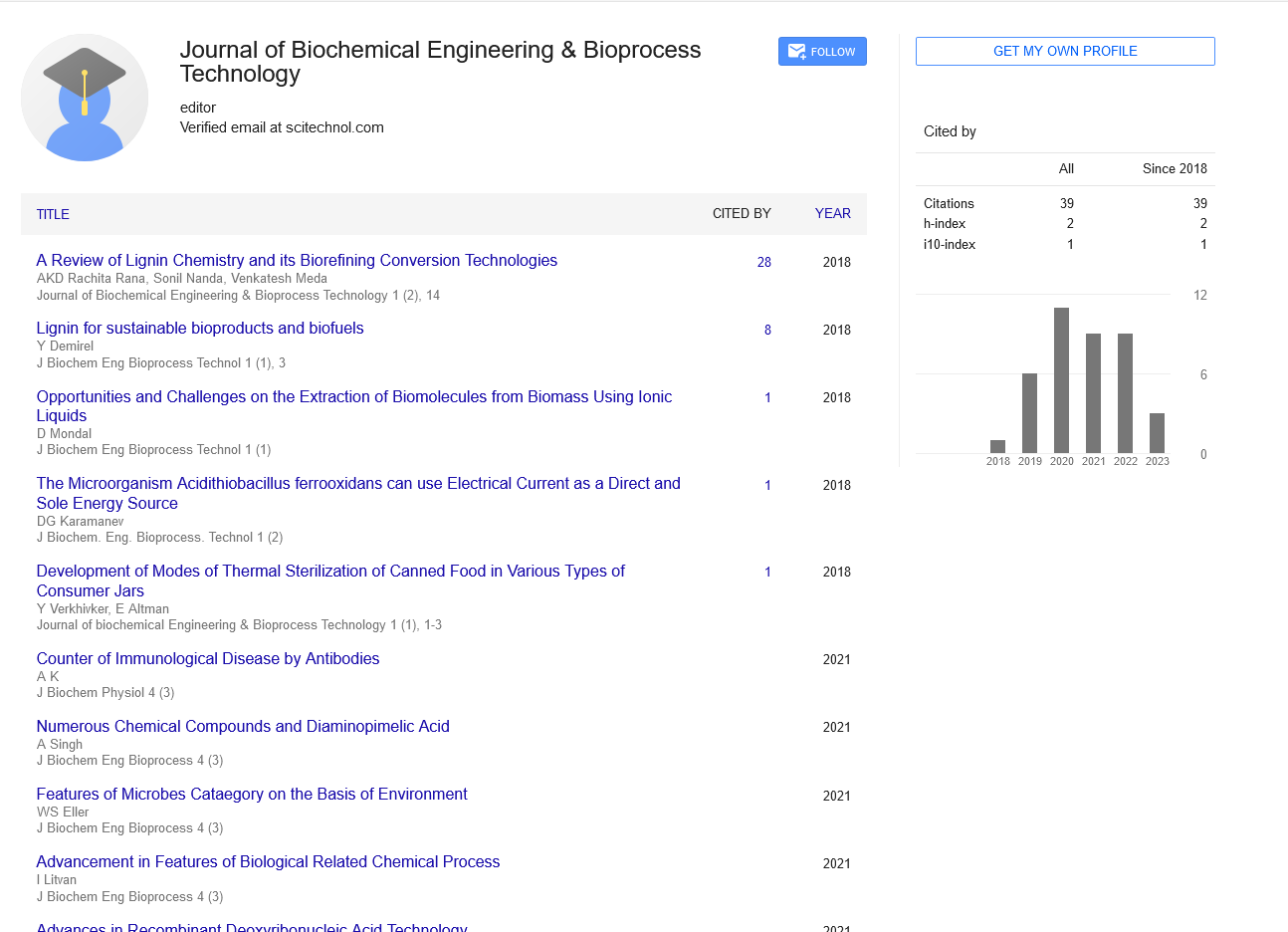Thermo-Catalytic Reforming (TCR) of Lignocellulosic Biomass using Steel Slags (SS) as Catalyst
Joao Santos
University of Birmingham, UK
: J Biochem Eng Bioprocess Technol
Abstract
Lignocellulosic biomass is known as a second generation biomass which means it is non-food competing, it is the most abundant renewable resource existing, and presently it’s considered as a promising feedstock for the synthesis of green chemicals and biofuels for reducing transportation emissions and dependence on fossil fuels (Lichtenthaler and Peters, 2004). SS are by products of the steel industry, which are composed of various metal oxides promoting a catalytic effect on pyrolysis products improving their quality. It is a cheap and sustainable alternative to replace zeolites, the most common cracking catalysts. In this research, a TCR reactor and SS are used to transform lignocellulosic biomass into high quality bio-oils. TCR is a combination of intermediate pyrolysis followed by a second post reforming step. Intermediate pyrolysis heats biomass to moderate temperatures between 400–500°C in the absence of oxygen, with a short vapour residence time (seconds) and moderate solid residence time (minutes) (Neumann et at, 2016). Post reforming is achieved at temperatures between 600-800°C with extended vapour and char residence times (Neumann et at, 2015). One characteristic of the process is that the final products (bio-oil, syngas and biochar) contains a higher energy density than the original feedstock having the advantage to be easily transported and stored (Mahmood et at, 2013). The introduction of SS in the TCR reactor increased the H2 yield in 73.9% and consequently the HHV in 6.2% for the syngas. The biooil produced using SS suffered a reduction of 46.6, 55.1 and 65.7% in terms of viscosity, water content and acid number, respectively. Moreover, the HHV of the same bio-oil raised 12.7%. All these improvements make the pyrolysis oil more attractive and suitable to be used as a biofuel.
Biography
E-mail: jns699@bham.ac.uk
 Spanish
Spanish  Chinese
Chinese  Russian
Russian  German
German  French
French  Japanese
Japanese  Portuguese
Portuguese  Hindi
Hindi 